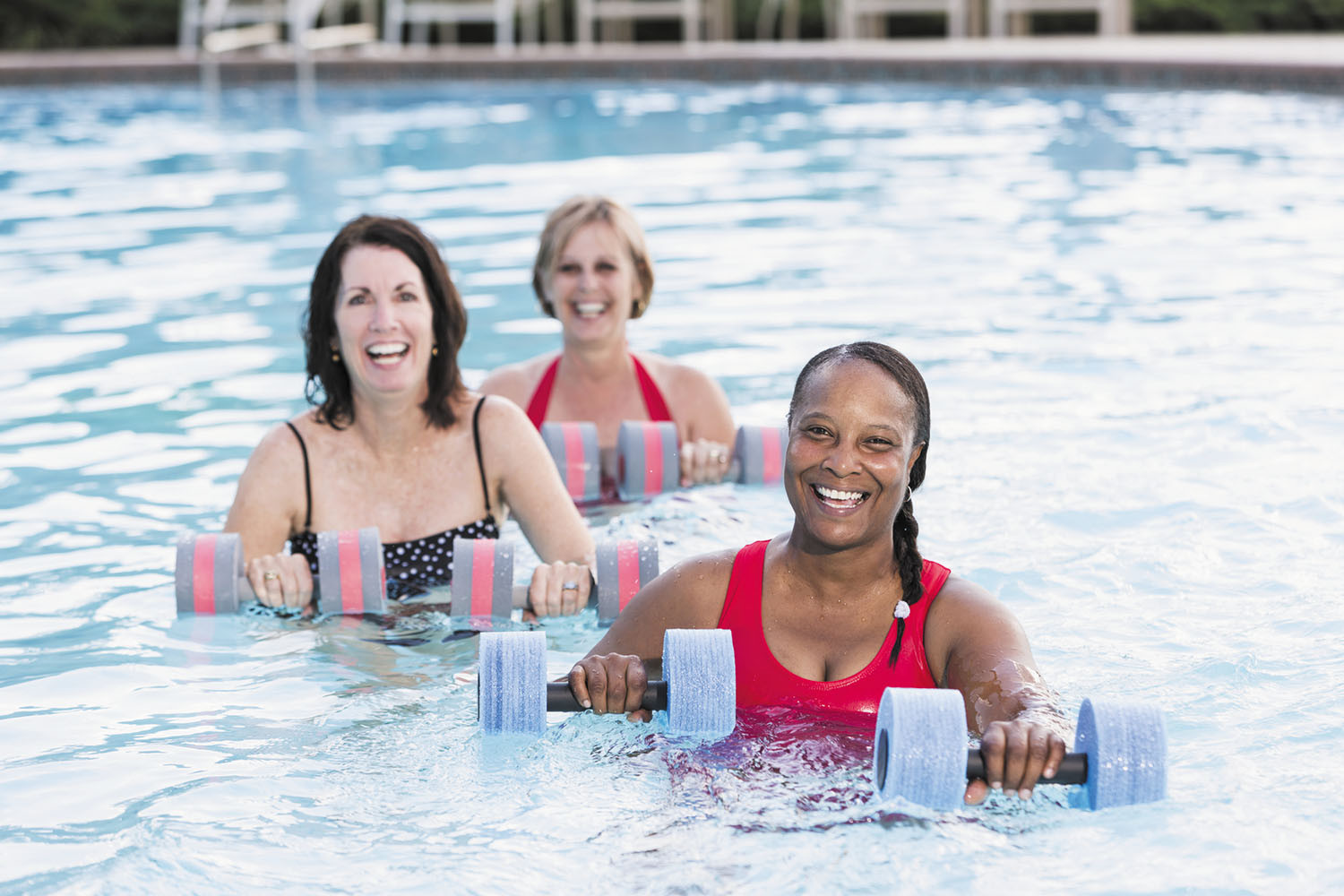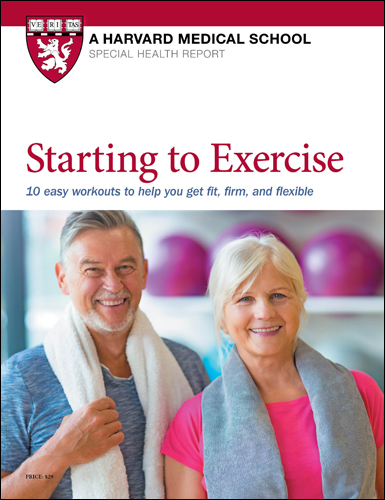
Less butter, more plant oils, longer life?

Healthier planet, healthier people

Counting steps is good — is combining steps and heart rate better?

Appendix pain: Could it be appendicitis?

Can saw palmetto treat an enlarged prostate?

How does Ozempic work? Understanding GLP-1s for diabetes, weight loss, and beyond

Zinc: What it does for the body, and the best food sources

Respiratory health harms often follow flooding: Taking these steps can help

Tips to leverage neuroplasticity to maintain cognitive fitness as you age

Can white noise really help you sleep better?


Aqua Fitness
Aqua Fitness, a new report from Harvard Medical School, explains how water exercise works your whole body, lessens impact, is an ideal environment for resistance training, elimin-ates the risk of a fall, and helps keep bones strong. Plus, you’ll get six stellar workouts to get the most from your pool time.
Other Product Information
Water is an ideal place to exercise. Water-based activities—from swimming to pool walking—are among the best forms of full-body exercise. It strengthens your muscles and your heart. It takes pressure off your joints. It allows for greater range of motion. It holds you up, so losing your balance is never a worry. Oh, and it burns more calories too.
Water aerobics and swimming offer advantages you can’t get on land. Not only is it gentler on your joints, it encourages greater flexibility and works more muscles.
You know strength training involves increasing resistance. On land that means adding weights; in water, it just means taking a step deeper. And walking in water for thirty minutes burns 50% more calories than the same pace on land. Plus, water pressure on your body increases cardiac output so more nutrient-rich blood gets to your muscles.
If that’s not enough, water-based exercises are safer. You’re not dodging cars and potholes and the weather’s always fine. Exercises have greater effect with less impact. And besides all that, being in the water is relaxing, refreshing, and yes, fun. 47 pages. (2023)
No-Swim Lap Workout
Did you know that you don’t have to swim to do laps in the pool? Just as you can walk or jog around a track, you can do your laps in a pool by walking or jogging in the water. The resistance from the water can kick up your calorie burn by as much as 60%, and the exercise will help to tone the muscles in your legs and buttocks. Since impact is lower in water, pool jogging can be an option even if you have joint issues. And it’s the easiest way to get started with pool workouts—no special technique or coordination required.
How long is a lap? Generally, if you’re swimming, a lap is considered to be the length of the pool, and most lap lanes run from a shallower to a deeper depth. For pool walking or jogging, however, what you count as a lap is up to you and will depend on the pool you are using. In some pools, you will be able to walk or jog in the deep end of the lane using a flotation belt, but in others you will not be able to. In any case, the goal for this workout is time, not a set number of laps, so don’t worry about how long your lap is.
For this workout, stick to doing laps in areas of the pool where you can stand. Some pools have lanes specified for walking or jogging, but many do not. If there are no designated lanes, it’s usually fine to use a swim lane as long as it’s unoccupied. Otherwise, find an area of the pool where you have enough space to walk or jog at least eight steps before having to turn around. If you have any balance issues or fears of the water, stay near the side of the pool so you can grasp the edge at any time. You can also hold on to a noodle as you walk or jog for more confidence.
- What is functional fitness training?
- How does functional fitness training differ from other types of exercise?
- How aging affects functional fitness
- Age-related changes
- Measuring your functional fitness
- Benefits of functional fitness training
- How functional training can improve your life
- Safety first
- Should you talk to a doctor first?
- Tips for safe exercise
- Posture and alignment
- Creating a workout plan
- Start with a warm-up
- Terms to know
- Ready, Set, Go Workout
- Chair Workout
- Build Your Basic Skills
- Walking Workout
- Crossing the Street Workout
- Climbing Stairs Workout
- Balancing on Uneven Surfaces Workout
- Standing Up from a Chair Workout
- Getting Out of Bed Workout
- Bending Down Workout
- Getting Up off the Floor Workout
- Lifting Things Overhead Workout
- Using Your Hands Workout
- Stretches
- Up Your Game
You might also be interested in…

Starting to Exercise
What can improve your mood, boost your ability to fend off infection, and lower your risk for heart disease, diabetes, high blood pressure, and colon cancer? The answer is regular exercise. It may seem too good to be true, but it's not. Hundreds of studies demonstrate that exercise helps you feel better and live longer. Starting to Exercise answers many important questions about physical activity. It will also help guide you through starting and maintaining an exercise program that suits your abilities and lifestyle.

Less butter, more plant oils, longer life?

Healthier planet, healthier people

Counting steps is good — is combining steps and heart rate better?

Appendix pain: Could it be appendicitis?

Can saw palmetto treat an enlarged prostate?

How does Ozempic work? Understanding GLP-1s for diabetes, weight loss, and beyond

Zinc: What it does for the body, and the best food sources

Respiratory health harms often follow flooding: Taking these steps can help

Tips to leverage neuroplasticity to maintain cognitive fitness as you age

Can white noise really help you sleep better?
Free Healthbeat Signup
Get the latest in health news delivered to your inbox!
Sign Up

